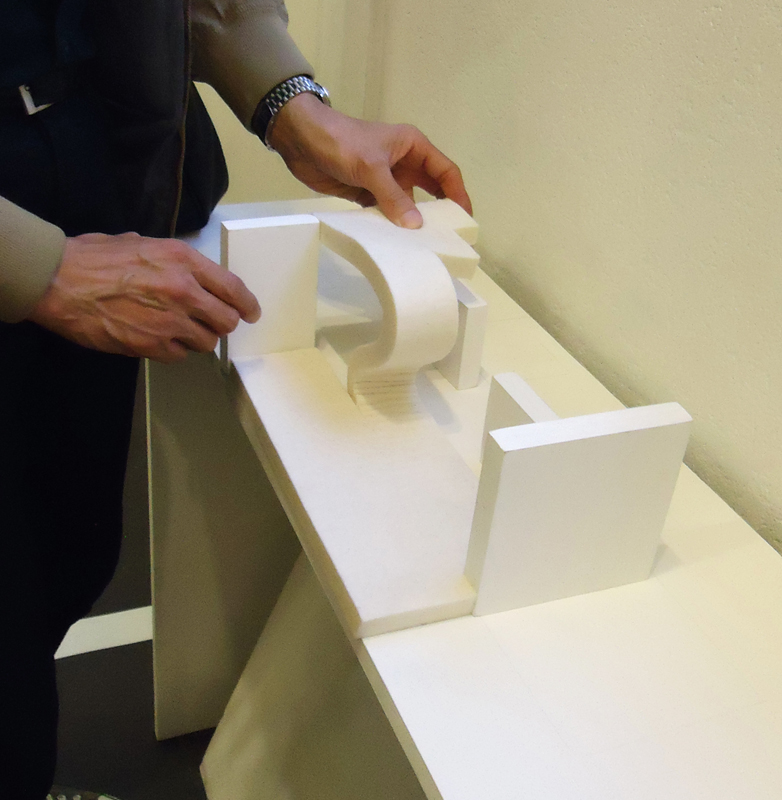 |
|
||||||||||||
Margaret Roberts Occupy Kobro - SC5 (waiting) (detail - thanks to Kevin) (materials: ParisCONCRET gallery, 70mm white 3M floortape, white silk, white engineering felt, white wood, visitors) ParisCONCRET, 6 - 23 October 2013. Opening 5-8pm Saturday 5 October. ParisCONCRET 5 rue des Immeubles Industriels 75011 PARIS Metro: Nation |
|||||||||||||
Occupy Kobro - SC5 (waiting) reconstructs Katarzyna Kobro's Spatial Composition (5) in two forms. It is enlarged (10 times) as a white tape line drawing over the interior surface of ParisCONCRET, that visitors occupy simply by being in the space. The two interior forms need to be given form by visitors—a low silk wall lies on the floor waiting for visitors to hold it up or stand inside it as if it is an upsidedown bag. The curved interior of Spatial Composition (5) has no physical form in Occupy Kobro, and visitors need to imagine it aided by a dotted taped wall-drawing showing its location, shape and scale. The white lines and shapes of Occupy Kobro - SC5 (waiting) are easily visible on the grey floor of ParisCONCRET, but their lower visibility on the walls and ceiling reflects the difficulty people have in seeing both Kobro and the actual space with which her work is concerned. Occupy Kobro - SC5 (waiting) also reconstructs Spatial Composition (5) as a small form (half size), like a toy, in 20mm white engineering felt and painted wood blocks, waiting for visitors' fingers to place the uprights and bend the felt to make another likeness of Spatial Composition (5). This version works like a catalogue for Occupy Kobro - SC5 (waiting) in that it explains how to enter into the work - by integrating doing and thinking, like a sport, so as to understand the work's lines and shapes and our occupation of them. In remaking the earlier work, Occupy Kobro - SC5 (waiting) tries to shrink the distance between Kobro's time and ours, at the same time as expanding the spatial concerns that we inherit from early twentieth century artists such as Kobro. Literal visitor-occupation of the work—whether by our bodies or by our fingers—makes more overt the spatial interests she worked with, because bodies are perhaps the most obviously space-dependent things we know. In providing the components for a likeness of Spatial Composition 5, it also hopes to generalise the work into a continuous present by allowing for its material completion in the future. Visitors have the opportunity to activate the work with their physical presence and participation, and then return the components to their unfinished state when they leave. Like the visitor-activated works of Franz Erhard Walther, the drawing directions of Sol LeWitt, the convention of musical scores, it is waiting to be made each time it engages with a physically responsive visitor, over and over. The waiting mode makes more overt the present nature of space. |
|
||||||||||||